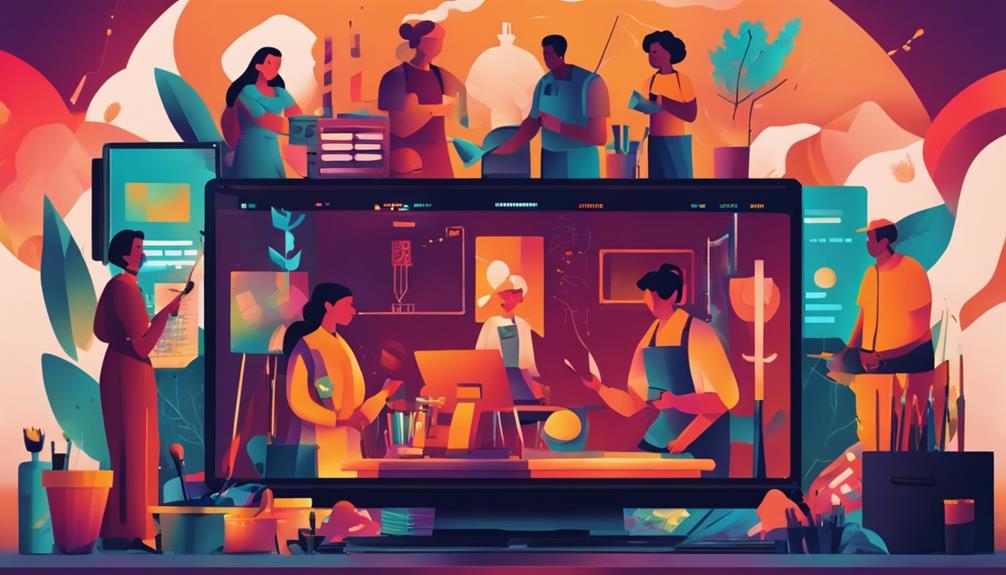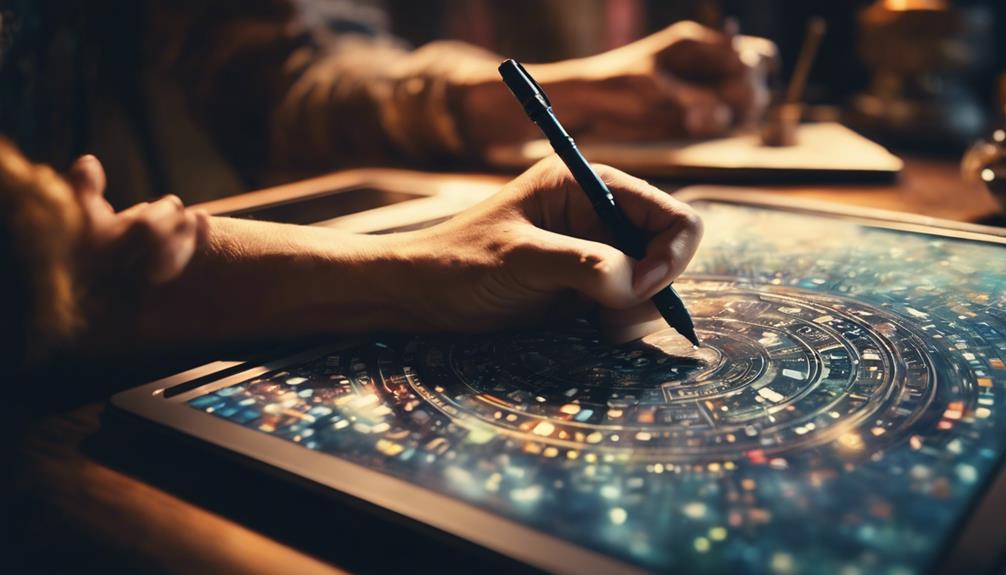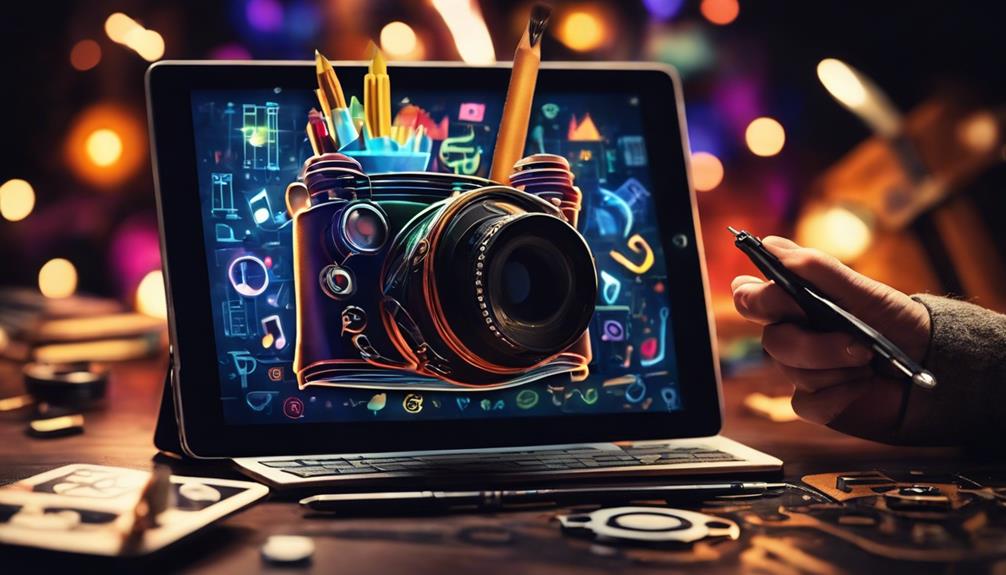Free CC Art: Mastering Tools
Learning Free Creative Commons Art Tools is crucial for modern artists in today’s creative scene. These platforms provide countless resources that make creating more accessible and encourage the sharing new ideas, which is vital in our connected world. For artists, it’s essential to learn how these tools work, understand their licenses, and how to access them. This knowledge expands an artist’s skills and opens new possibilities for creativity that weren’t possible before.
However, mastering these tools comes with challenges that require a closer look.
The path to becoming proficient in these tools is not straightforward. Artists must invest time in learning and experimenting with these platforms. This effort pays off by enabling artists to bring their unique visions to life in ways they might not have thought possible. However, the complexity and variety of tools available can sometimes be overwhelming.
Key Takeaways
- Artists need to learn these free tools for more creativity.
- Mastering takes time but unlocks new artistic possibilities.
- Variety can overwhelm; focus simplifies learning.
Choosing the Right Tools
Choosing the best tools for creative work is vital to see if they fit with your creative goals and how you like to work. Look for platforms with a wide range of features and ways to tweak things so you can get your projects just right. It’s also essential that these tools are easy to use. A simple interface makes bringing your ideas to life easier without getting bogged down by complex processes.
Feedback from a community of users is an excellent way to judge a tool’s worth. User reviews can tell you a lot about how easy it is to collaborate and share work using these platforms. For those who want to share their creations freely, picking tools that support Creative Commons licenses is critical. This choice supports a culture of openness, innovation, and working together.
License and Accessibility

Understanding the variety of Creative Commons licenses and why making art tools accessible is vital for anyone sharing their creations. These licenses help protect artists while allowing others to innovate with their work. They range from the very open CC0, which lets artists give up all rights and doesn’t even require people to name them when using their tools, to stricter ones that demand attribution or restrict commercial use.
Making art tools accessible goes beyond just following the law. It opens up these tools to people with disabilities, widening the audience and enhancing the tools’ impact. This focus on inclusivity makes sure more people can express their creativity. So, when artists and developers think about licensing and accessibility, they do more than just tick boxes. They ensure their art tools are legally solid and available to many people.
Unleashing Creative Potential
Offering artists free access to top-notch resources, Creative Commons art tools eliminate the financial barrier to creativity. These platforms provide an enriching and easily accessible learning environment, letting artists fully immerse in their craft without worrying about software costs. This openness to create and experiment lays the foundation for an artist’s journey, making their creative process an accessible exploration of their imagination and skills.
Creative Commons licenses in these tools promote a culture of sharing and collaboration. This exchange of ideas is crucial for artistic development. Artists become a global community, engaging in a shared learning experience. This atmosphere helps creators improve their skills through feedback and the continuous evolution of their work.
Diverse Art Styles Exploration

Leveraging free Creative Commons art tools, artists can quickly dive into various art styles without worrying about costs. This accessibility fosters a vibrant community where creativity knows no bounds. These platforms enable artists to experiment freely, enhancing their skills and pushing the boundaries of their artistic vision.
Here’s a glance at different art styles and the tools that support them, highlighting how artists worldwide can push the envelope of creativity:
| Art Style | Tool Example | Benefit |
|---|---|---|
| Digital Painting | Krita | Offers detailed textural capabilities |
| 3D Modeling | Blender | A full suite for 3D design |
| Vector Art | Inkscape | Enables precision and easy scalability |
| Pixel Art | Piskel | Known for its user-friendly design |
| Animation | Synfig Studio | Packed with powerful animation tools |
Each tool caters to specific artistic endeavors, allowing creators to experiment and find their niche. Whether it’s the complex layers of a digital painting or the precision of vector art, these platforms are gateways to mastering various styles. They provide the means to experiment and help artists connect with others, share their work, and receive feedback, further enriching the creative process.
Community Collaboration Benefits
When artists come together on AI art platforms, they tap into a rich mix of cultural backgrounds and ideas. This blend fosters a vibrant environment where new and innovative art forms can emerge. Online communities are crucial for artists wanting to sharpen their skills, as they provide immediate feedback. This quick exchange helps artists improve quickly and encourages ongoing growth.
Collaborative projects on these platforms allow artists to push their limits and try new things. Artists can break cultural and geographical boundaries together, leading to fresh and exciting projects. Networking on these platforms opens artists to various perspectives, boosting creativity. This widens an artist’s view and builds a sense of togetherness and a common goal within the art community, making collaboration a crucial part of creating art.
Ethical Art Creation

In the world of digital art, it’s crucial to create ethically. This means respecting copyright laws and giving proper credit to original artists. Creating ethically builds a respectful community and ensures that artists use resources fairly. We cultivate a culture of integrity and teamwork by focusing on ethical practices.
To ethically navigate digital art creation, here are some steps to follow:
- Learn about Creative Commons licenses. This helps you understand what is allowed with the artwork you want to use.
- Follow copyright laws. This protects you and others from legal issues and promotes respect in the creative process.
- Credit artists and creators properly. Recognizing their work encourages respect and collaboration.
- Get permission when needed. If Creative Commons doesn’t cover your use case, get permission from the copyright holder.
These steps help maintain a healthy and collaborative environment in the digital art community.
Overcoming Artistic Challenges

Using ethical practices in digital art creation lays a strong groundwork for artists aiming to overcome their challenges. Free Creative Commons art tools are a goldmine for artists looking to grow and innovate. These tools are packed with assets, brushes, and effects that are key in tackling artistic obstacles. Artists can polish their skills and push their creative limits by tapping these free resources.
The chance to work alongside others through these platforms is a game-changer for breaking through creative blocks. Connecting with a community of artists offers a space to share ideas, receive feedback, and learn new methods. This kind of interaction can open up new viewpoints and ignite fresh inspiration. Community support and access to free resources create a nurturing environment for artists to flourish, innovate, and face the challenges in their creative path.
Frequently Asked Questions
How Can I Legally Sell Artwork I’ve Created Using Free Creative Commons Art Tools and Resources?
- Follow copyright laws closely when using art resources.
- Choose online platforms carefully for selling your art.
- Set fair prices and continuously improve your portfolio.
Are Any Hidden Costs or Fees Associated With Using These Free Tools for Commercial Projects?
- Software compatibility issues may increase project costs.
- A lack of technical support could necessitate external help.
- Learning new platforms demands time, impacting productivity.
Can I use Free Creative Commons Art Tools to create copyrighted materials for a client?
- Use Creative Commons tools legally for client projects.
- Meet client needs while staying original.
- Boost your portfolio with unique creations.
How Do I Credit Artists or Creators Correctly When Using Their Free Creative Commons Licensed Work in My Projects?
- Credit artists clearly for their work to show respect.
- Include license type when sharing their creations online.
- Promote creative collaboration by acknowledging original creators.
What Are the Limitations in Modification Terms When Using Artwork From Free Creative Commons Sources in My Designs?
- Artwork modifications may face license constraints.
- Attribution is often required for creative use.
- Not all work is allowed for commercial purposes.
